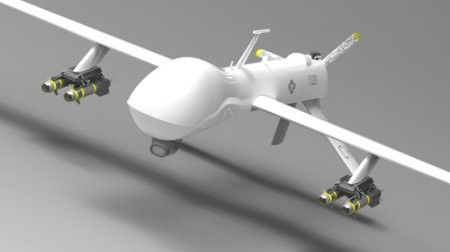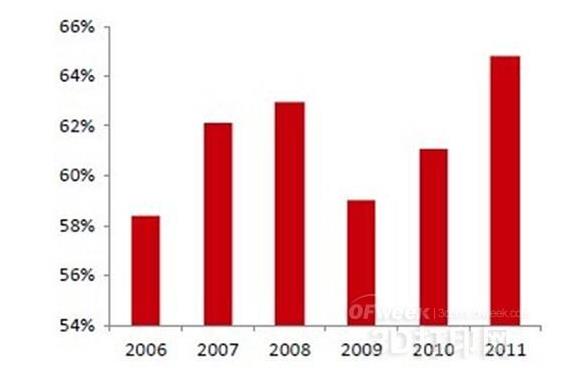The four advantages of 3D printing technology in the field of drones
At the earlier Dubai Air Show, US UAV manufacturer AuroraFlightSciences and 3D printing company Stratasys jointly launched the world's first 3D printed jet drone with a speed of 241km/h. Its appearance also means that the technology of human 3D printing has reached a new level. This high-speed drone has a wingspan of 3 meters and weighs 15 kilograms. It was designed by Aurora and produced by Stratasys. It is understood that 80% of the components of the 3D printing drone are manufactured by means of fused deposition modeling (FDM), the body is printed with nylon material, the engine exhaust pipe is made of metal, and the heat resistance is good.

3D printing technology has already begun to appear in the field of drone production. Taking full advantage of the advantages of 3D printing technology and avoiding its risks as much as possible will become a top priority. This article will use this as a starting point to analyze its role in the field of UAV production from the advantages and disadvantages of 3D printing technology.
3D printing technology for the four major advantages of the drone industry
Timeliness
3D printing technology is widely used in the design of the prototype in the field of drones, and the prototype can be produced quickly and at low cost.
UAV design requires multiple iterations, and traditional machining and assembly processes will consume a lot of manpower, resources, and time in such iterative iterations. The 3D printing technology, which does not need to open the mold, greatly shortens the iteration cycle, can quickly manufacture and verify the prototype, accelerates the time interval from design to actual use, and improves the efficiency of the enterprise. The validated prototype can also be used for display, which greatly speeds up the time-to-market of the product and thus enhances the competitiveness of the company.
In 2012, the University of Virginia developed a third 3D printing aircraft. Team engineer David Schafer said: "It used to be two years to design a plastic turbofan engine, costing about $250,000. But using 3D technology, The design and construction of the aircraft took only four months and cost about $2,000. The shortening of the production cycle is obvious.
2. Economics
The production method of 3D printing “addition†has no cutting, grinding, corrosion, etc.; “subtraction†process realizes “how much is needed for raw materialsâ€, greatly improves utilization rate and controls the generation of waste; “one molding†eliminates the mold, The cost of fixtures and processing tools; the “localized†production model eliminates the upfront investment in plant and production lines, as well as the cost of transportation and storage in the middle.
CrucibleIndustrialDesign has 3D printed buckles for 853 seats on the Airbus A380. Each buckle has a mass reduction of 85g compared to the traditional steel buckle. It can save 45,000L of fuel per 1kg of aircraft life, which will save 3.3 million L of fuel. , operating costs of 200 million euros.
3. The advantages of manufacturing complex parts are obvious
In the case of conventional manufacturing, the more complex the shape of the object, the higher the manufacturing cost. For 3D printers, the cost of making complex-shaped items does not increase, and creating a gorgeous, complex-shaped item does not consume more time, skill, or cost than printing a simple square.
In the drone industry, the machining accuracy and complexity of the parts required are very high. There are some parts (for example, a wing with an elliptical cross section, a hollow or porous (honeycomb) structure of metal parts, as shown above) that cannot be manufactured by conventional machining processes. The emergence of 3D printing technology has enabled the production of these advanced components.
4. Diversity of material selection
Traditional manufacturing machines cannot easily combine a variety of raw materials during cutting or molding, and with the development of multi-material 3D printing technology, we have the ability to fuse different raw materials. Raw materials that were previously unmixed will form new materials that have a wide variety of tones and unique properties or functions.
Domestic development bottleneck
1. Domestic 3D printing technology is not mature
Compared with developed countries in Europe and America, China's 3D printing technology is still in its infancy, especially in terms of key core components. For example, lasers, we can only import equipment from the United States and Germany. The immaturity of domestic 3D printing technology has the direct consequence that foreign companies are asking for price for 3D printing materials.
At this stage, the main cost of 3D printing lies in the purchase of 3D printed materials, while foreign companies often profit from monopolizing 3D printed materials. The main types of 3D printed materials at this stage are plastics, liquid resins and metal powders. 3Dsystems and Stratasys mainly supply the first two materials. From the perspective of the gross profit margin of the company's materials sales, it has remained above 50% in recent years, and the profits are huge.

3Dsystems gross margin
Because 3D printing materials are monopolized by foreign companies, the price is too high, which makes the 3D printing technology unable to be used in large quantities in China.
2.3D print material type is less
Looking at the world, there are only more than 10 kinds of metal materials available in the industrial field. The aluminum-silicon alloy, titanium alloy, nickel alloy and stainless steel are relatively mature. The new material has 3DXNanoESD carbon nanotube filament. 3D printing is limited by the types of consumables and performance research, and it cannot replace traditional industrial processing methods in many fields.
Although 3D printing technology has not been applied on a large scale in China's drone industry, in the long run, with the further increase of national investment and the further improvement of consumables technology, 3D printing technology is due to its various traditional processing methods. Unmatched advantages will definitely make a difference in the UAV industry, becoming an indispensable processing technology in the UAV industry, largely changing the production and management methods of UAV manufacturing enterprises, and helping China's UAV manufacturing technology. The development has improved.
(Editor)
Candy Jar
Candy Jar,Plastic Candy Jars,Lolly Jars,Personalized Candy Jar
Shanxi Freeway Export and Import Co.,LTD , https://www.fw-deco.com